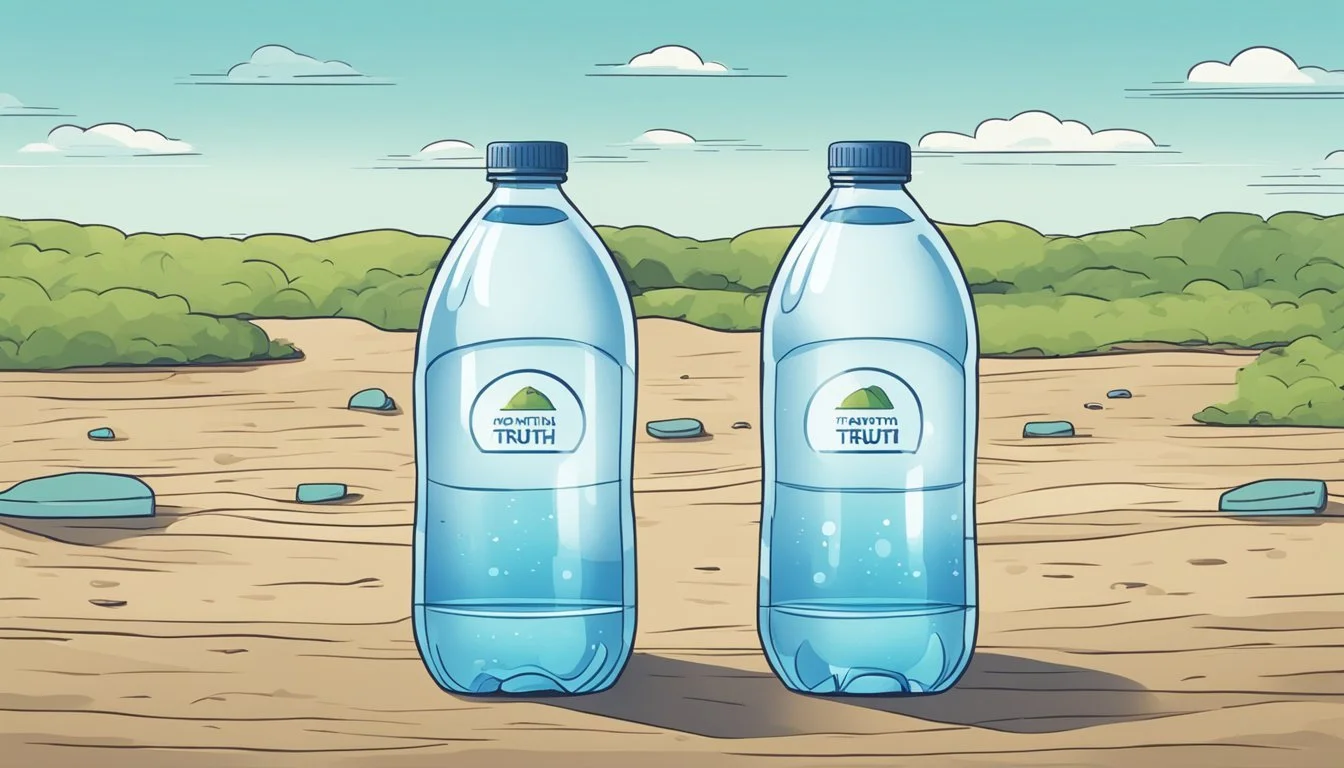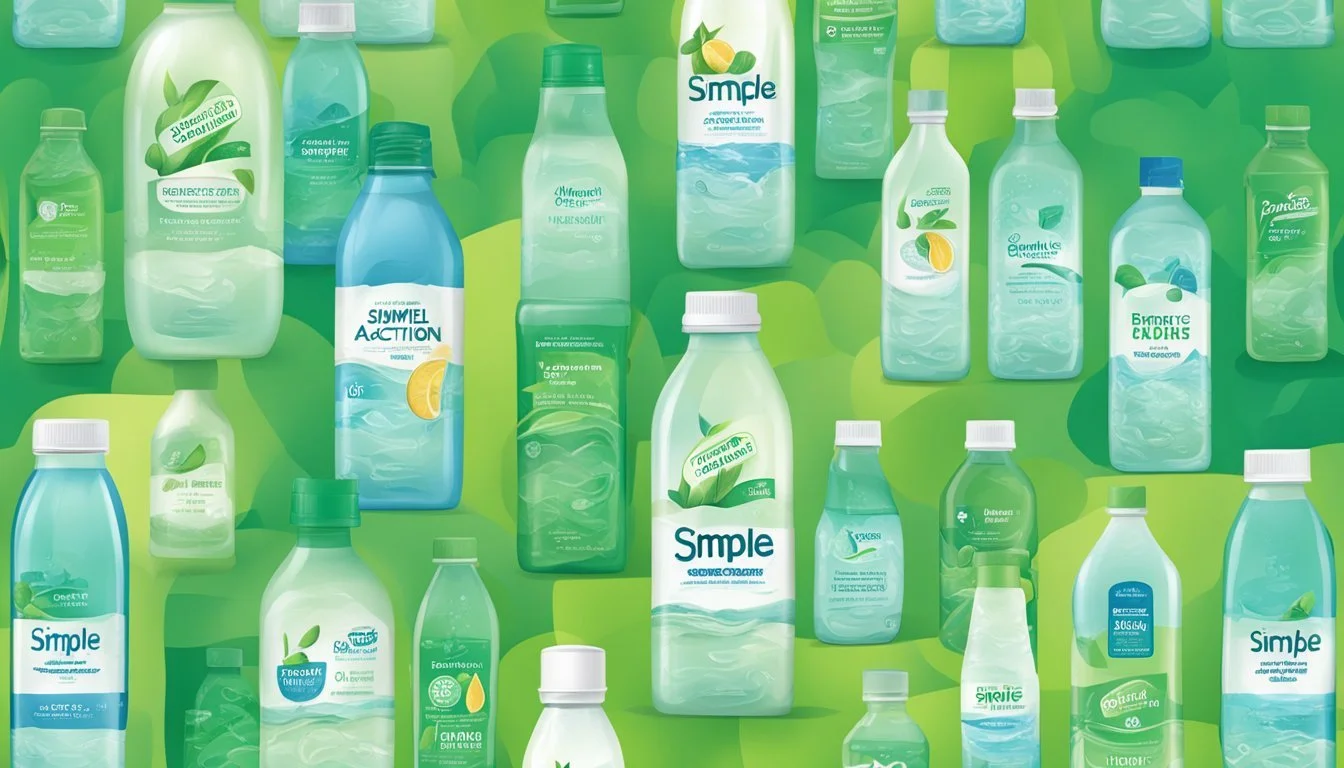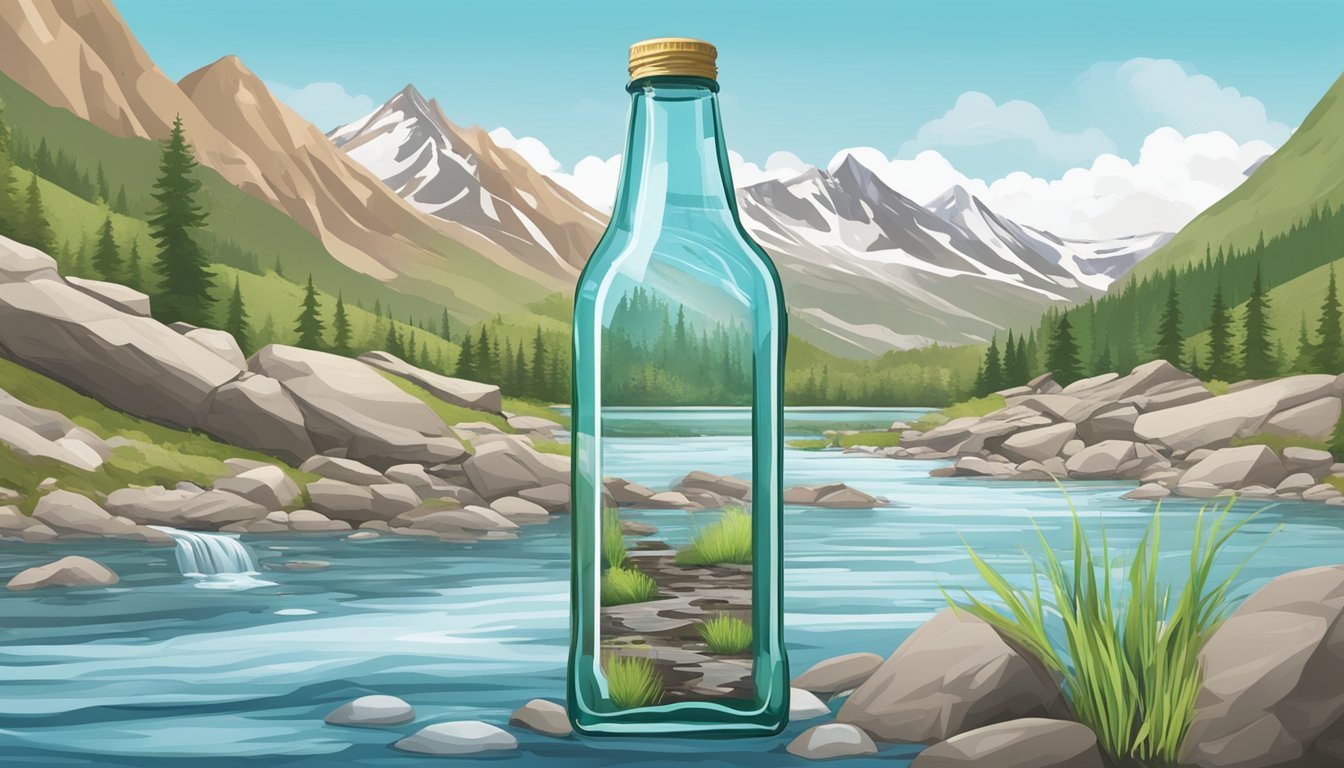Simple Truth vs. Action
Comparative Analysis of Bottled Water Brands
Choosing the right bottled water can significantly impact your hydration experience. Consumers often find themselves torn between brands like Simple Truth and Acqua Panna. Each offers unique benefits catering to different preferences.
Simple Truth Artesian water prides itself on maintaining a pH level of 8, making it a popular choice for those who prefer alkaline water. In contrast, Acqua Panna, renowned for its smooth taste and neutral pH, provides a premium experience favored by many. Simple Truth offers a more alkaline solution, while Acqua Panna excels in delivering a luxuriously smooth taste.
In an evolving market with a plethora of bottled water options, understanding these two brands can help make an informed choice. Whether you value alkalinity or a refined taste, knowing the distinct qualities of Simple Truth and Acqua Panna can guide your purchase decision effectively.
Unveiling the World of Bottled Water
Bottled water comes in various forms, each with unique characteristics related to origin, purification process, and taste. Understanding these differences is essential for consumers to make informed choices.
Types of Bottled Water
Bottled water can be broadly categorized into several types, each varying in source and treatment:
Purified Water: This water undergoes extensive purification processes such as distillation, deionization, or reverse osmosis. Brands ensure the removal of both chemical and biological contaminants, offering high-quality, safe drinking water.
Spring Water: Sourced from natural springs, this type of water is collected directly from the source where it naturally flows to the surface. It often retains natural minerals.
Artesian Water: This is sourced from a confined aquifer, which means it has naturally filtered through rock layers. It is known for its purity and mineral content.
Mineral Water: It contains a specific amount of dissolved minerals and salts. These minerals are naturally present and not added after water extraction.
Alkaline Water: It has a higher pH level than regular tap water. The alkalinity is often achieved through natural sources or by adding minerals to the water.
Determining Water Quality
Water quality varies significantly depending on the source and purification processes. Key indicators of quality include:
pH Levels: Measure the acidity or alkalinity of the water. Each type of water, such as alkaline or mineral water, has specific pH levels which can be tested and verified.
Contaminant Levels: This includes checking for the presence of harmful substances like bacteria, heavy metals, and chemical residues. Lists of permissible limits are often provided by regulatory bodies.
Taste and Odor: Many consumers judge quality based on sensory characteristics. Purification processes can influence these attributes, making some bottled waters preferred for their clean and fresh taste.
Branding and Market Varieties
The bottled water market offers numerous brands providing diverse options. Some popular brands include:
Simple Truth: Known for their commitment to purity and transparent sourcing, often offering various types of bottled water including purified and spring water.
Action Water: Focuses on performance-oriented branding, often emphasizing minerals and electrolytes beneficial to athletes and active individuals.
The branding strategies often highlight unique selling points like superior taste, health benefits, or environmentally friendly packaging. The market is crowded, and each brand strives to distinguish itself through quality and additional health claims.
Regulatory Bodies and Standards
Regulatory oversight ensures bottled water safety and quality. Key regulatory bodies include:
FDA (Food and Drug Administration): The FDA sets standards for bottled water quality and safety in the United States. They regulate aspects like permissible contaminants and labeling requirements.
EPA (Environmental Protection Agency): While primarily overseeing tap water, the EPA's standards often influence public perceptions of water quality, indirectly affecting the bottled water industry.
International Bottled Water Association (IBWA): This trade association sets and promotes high standards for the bottled water industry. They offer certifications and guidelines ensuring member brands adhere to best practices.
These regulations and standards reassure consumers about the safety and quality of their bottled water choices.
Health Implications and Benefits
Understanding the health implications and benefits of Simple Truth and Action bottled water involves examining their effects on hydration, potential contaminants, and the mineral content they provide.
Hydration and Electrolytes
Proper hydration is essential for numerous bodily functions. Both Simple Truth and Action bottled waters aim to offer optimal hydration. Electrolytes, such as sodium, potassium, and magnesium, are crucial for maintaining fluid balance and muscle function. While normal water generally provides excellent hydration, having electrolytes can enhance performance and recovery, especially after intense physical activities. Simple Truth may include added electrolytes designed specifically to support active lifestyles. There is limited data on Action's electrolyte content, but it is assumed to cater to similar needs for hydration and replenishment.
Contaminants and Chemicals
Contaminants in bottled water can pose significant health risks. Harmful substances like lead, arsenic, and mercury can lead to various health issues if consumed over time. Action bottled water adheres to stringent safety standards that minimize the presence of these contaminants. Studies reveal that even top brands can contain nanoplastics, with averages up to 240,000 particles per liter, raising concerns about long-term effects. Simple Truth emphasizes its commitment to purity, employing advanced filtration methods to reduce contaminants like PFAS and bacteria, making it a safer choice for daily consumption.
The Minerals in Your Water
Mineral content varies between bottled water brands and can influence health benefits. Calcium and magnesium are two critical minerals often found in bottled waters. They support bone health, muscle function, and overall metabolic processes. Acqua Panna, another premium brand, is noted for its smooth taste and balanced mineral content. Simple Truth and Action strive to provide a balanced profile of minerals without excessive amounts that might alter taste or efficacy. Regular consumption of water with balanced mineral content contributes positively to overall health.
By focusing on hydration, reducing contaminants, and providing beneficial minerals, both Simple Truth and Action bottled waters offer distinct health benefits worth considering for daily consumption.
The Journey from Source to Bottle
Understanding the path from the water source to the bottle involves looking at natural extraction methods, purification techniques, and the final bottling and production processes.
Natural Sources and Extraction
Premium bottled water brands like Acqua Panna and Icelandic Glacial often originate from pristine natural sources. Natural spring water is collected directly from protected underground springs.
These sources are chosen due to their high-quality water and minimal contaminants. Water sourced from municipal supplies, on the other hand, undergoes extensive filtering to ensure safety and quality.
Whether from natural springs or municipal sources, the initial stage of extraction requires careful handling to maintain water purity, taking measures to protect the water from environmental pollutants.
Purification Processes
Purification processes can vary significantly. Reverse osmosis, distillation, and deionization are common methods used by many bottled water brands. This step is crucial for removing impurities and ensuring high water quality.
For purified water from municipal sources, these methods can be more intensive. Simple Truth bottled water, for instance, may use reverse osmosis to achieve its clean flavor.
Natural spring water like Acqua Panna undergoes less aggressive treatments since its source is naturally pure. The water retains its natural minerals, contributing to its unique taste profile.
Bottling and Production
The final step is the bottling process, where purified water is packaged for consumer use. This stage involves sophisticated machinery to fill, cap, and label bottles at high speeds.
Production facilities prioritize hygiene and quality control to ensure that the water remains uncontaminated. Bottling plants are often located close to the water source to minimize the risk of contamination.
This step also includes packaging considerations, such as using environmentally friendly materials to reduce plastic waste, aligning with consumer demand for sustainable practices.
This process reflects the brand's commitment to delivering high-quality bottled water to consumers efficiently and safely.
Evaluating Taste and Palate
Taste plays a pivotal role in selecting bottled water, influenced by pH levels, mineral balance, and individual expectations. Understanding these factors helps in discerning one's preference for Simple Truth or Action.
The Role of pH Level
The pH level significantly affects water taste. Simple Truth Artesian water has a pH level of 8, making it alkaline. Alkaline water often tastes smoother, less acidic, and is sometimes preferable for those who find neutral or acidic water unpalatable.
In contrast, Action water's pH is closer to neutral. This neutrality can result in a crisp, clean taste, which some consumers prefer. Higher pH levels can also impact mouthfeel, favoring Simple Truth for a softer palate experience.
The Impact of Mineral Balance
Mineral content influences taste and health benefits. Simple Truth Artesian water, bottled at the Crystal Falls Springs, adds natural minerals like calcium and magnesium. These minerals not only enhance taste but also contribute to the body's nutritional needs.
Action water may utilize different sources and purification methods, which impact its mineral profile. While ensuring purity, added minerals can vary, affecting taste complexity. Consumers may perceive subtle differences in flavor, dependent on mineral concentration and type.
Consumer Perceptions and Expectations
Consumer perceptions vary based on taste preferences and expectations. Taste tests often reveal strong preferences, as seen in comparisons with other brands. Price sensitivity can influence choices when more expensive brands like Simple Truth or Action are compared to cheaper alternatives.
Expectations of high-quality water encompass more than just taste. Branding, purity assurances, and advertised benefits play a role in consumer decisions. Therefore, evaluating taste incorporates both sensory experience and perceived value.
Environmental Considerations
Selecting between Simple Truth and Acqua Panna involves evaluating their environmental impacts. Key points include the challenges posed by plastic waste, the effectiveness of waste management and recycling practices, and the promise of sustainable packaging alternatives.
The Plastic Dilemma
Plastic bottles account for significant environmental pollution. Annually, billions of plastic bottles are produced, used, and discarded, leading to overflowing landfills and ocean pollution.
Consumers need to consider reusable bottles as a viable substitute. Unlike single-use plastics, reusable bottles offer multiple uses, reducing the burden on waste management systems.
Plastic from both brands ends up in different waste streams, often not recycled efficiently. Therefore, the choice of a particular brand should factor in the broader environmental footprint associated with plastic bottle production and disposal.
Waste Management and Recycling
Recycling systems vary across states, impacting the effectiveness of waste management for both Simple Truth and Acqua Panna bottles. Some regions have robust recycling programs, while others struggle to manage waste effectively.
Recyclable materials like glass bottles and certain types of plastic play a crucial role. While glass bottles are fully recyclable, they have higher transportation emissions due to their weight. Conversely, plastic is lighter but less reliably recycled.
Educating consumers about proper disposal and recycling is essential. A comprehensive understanding of local recycling policies can enhance the effectiveness of waste management efforts and reduce environmental impact.
Sustainable Packaging and Alternatives
The move towards sustainable packaging materials is gaining traction. Environmentally friendly materials like biodegradable plastics, plant-based fibers, and enhanced recycling processes are pivotal. They minimize the ecological footprint compared to traditional plastics.
Simple Truth and Acqua Panna should invest in sustainable options such as plant-based bottles or partnerships with recycling programs. Encouraging consumers to switch to these alternatives can significantly reduce waste.
Promotion of alternatives, including glass bottles or reusable options, can lead to a more sustainable approach. Brands committed to reducing their environmental impact must innovate and offer packaging that aligns with sustainability goals.
Accessibility and Convenience
Simple Truth and Action bottled water brands offer differing benefits in terms of accessibility and convenience. While both cater to a wide audience, their availability and pricing are key factors that may influence consumer choice.
Availability in Different Regions
Simple Truth is widely accessible through Kroger and its affiliated stores, covering many states across the U.S. This makes it a convenient option for regular grocery shoppers. As a store brand, it often has consistent stock, allowing for reliable access.
Action water focuses on broader retail distribution. It can be found in various retail outlets beyond grocery stores, including convenience stores and online platforms. This widespread availability makes it an excellent choice for consumers seeking versatile shopping options.
Action's affordability also enhances its accessibility, appealing to budget-conscious shoppers who prioritize cost-effectiveness. Simple Truth, while competitively priced, is often limited to Kroger and associated stores, which may restrict access for some consumers.
Both brands offer sealed bottles that are portable, making them easy to carry for on-the-go hydration. Simple Truth's presence in specific regions and Action's widespread retail distribution highlight their unique approaches to accessibility and convenience.
Economic Factors and Considerations
When evaluating bottled water, economic factors such as price and the relationship between cost and quality are crucial. Comparing prices among brands helps determine if more expensive options offer better value.
Price Comparison Among Brands
The price tag of bottled water varies significantly across brands. For instance, premium brands like Evian, Fiji, and Voss often command higher prices due to perceived quality and brand reputation. In contrast, more mainstream brands such as Dasani, Aquafina, and Pure Life provide more affordable options.
Brand Average Price per Liter Evian $1.50 Fiji $2.00 Voss $2.50 Dasani $1.00 Aquafina $1.00 Pure Life $0.80
Recognizing these differences is fundamental. Consumers prioritize budget-friendly options without sacrificing essential benefits. In general, higher-end brands justify their costs with added features like unique mineral compositions or sophisticated packaging.
Cost Versus Quality Assessment
To evaluate if the added expense of premium bottled water equates to better quality, several factors need consideration. Brands like Smartwater and Core Hydration emphasize purity, enhanced mineral content, or specific filtration processes. For instance, Smartwater is known for its vapor distillation process.
Quality Metrics to Consider:
Mineral Content: What's included and omitted.
Purity Levels: Free from contaminants.
Packaging: Both sustainability and durability.
Comparing these metrics, Evian and Fiji focus on natural spring sources, while Aquafina and Dasani use filtration methods to ensure purity. Consumers must assess if the practical benefits of premium brands warrant the higher prices or if bottled options like Pure Life suffice for their needs.
Consumer Education and Marketing
Consumers frequently face the challenge of discerning good marketing from genuine quality. It is essential to understand marketing terms and recognize transparent labeling to make informed choices.
Understanding Marketing Claims
Marketing strategies influence consumer perceptions. Terms like "premium quality" and "added minerals" often promise enhanced benefits. Brands such as Essentia and Icelandic Glacial highlight features like high pH levels or purity.
Coca-Cola's Smartwater claims vapor-distilled purity with added electrolytes. Similarly, Crystal Geyser emphasizes its natural spring water origin.
These claims sound appealing but don't always guarantee superior quality. Reading Consumer Reports and checking compliance with the Safe Drinking Water Act ensures reliability. Understanding these claims can prevent falling for mere advertising tactics.
Educational Efforts and Transparent Labeling
Efforts to educate consumers are pivotal. Clear and detailed labeling helps consumers make better choices. Kroger and Simple Truth provide transparency by listing water sources and purification methods on their labels.
Organizations like Consumer Reports play a vital role by testing and publishing water quality results. They expose discrepancies and help consumers make safer choices.
Transparent labeling includes details about mineral content, pH level, and source. This education aids in distinguishing between legitimate premium water and misleading marketing. Educated consumers can then select products that meet their genuine needs and preferences.
More About Simple Truth
Aqua Carpatica vs Simple Truth: Which Bottled Water is Better?
Cascade Mountain vs Simple Truth: Which Bottled Water is Better?
Core Hydration vs Simple Truth: Which Bottled Water is Better?
Crystal Geyser vs Simple Truth: Which Bottled Water is Better?
Hawaii Volcanic vs Simple Truth: Which Bottled Water is Better?
Hawaiian Springs vs Simple Truth: Which Bottled Water is Better?
Ice Mountain vs Simple Truth: Which Bottled Water is Better?
Icelandic Glacial vs Simple Truth: Which Bottled Water is Better?
Liquid Death vs Simple Truth: Which Bottled Water is Better?
Mountain Valley Spring Water vs Simple Truth: Which Bottled Water is Better?
Nestle Pure Life vs Simple Truth: Which Bottled Water is Better?
Poland Spring vs Simple Truth: Which Bottled Water is Better?
Purely Sedona vs Simple Truth: Which Bottled Water is Better?
Richard's Rainwater vs Simple Truth: Which Bottled Water is Better?
San Pellegrino vs Simple Truth: Which Bottled Water is Better?
Simple Truth vs Crystal Lake: Which Bottled Water is Better?
Simple Truth vs Essence pH10: Which Bottled Water is Better?
Simple Truth vs Kirkland Signature: Which Bottled Water is Better?
Simple Truth vs Proud Source: Which Bottled Water is Better?
Simple Truth vs Talking Rain AQA: Which Bottled Water is Better?
Simple Truth vs Whole Foods 365: Which Bottled Water is Better?
Solan de Cabras vs Simple Truth: Which Bottled Water is Better?
Whole Foods Italian Still Mineral water vs Simple Truth: Which Bottled Water is Better?





